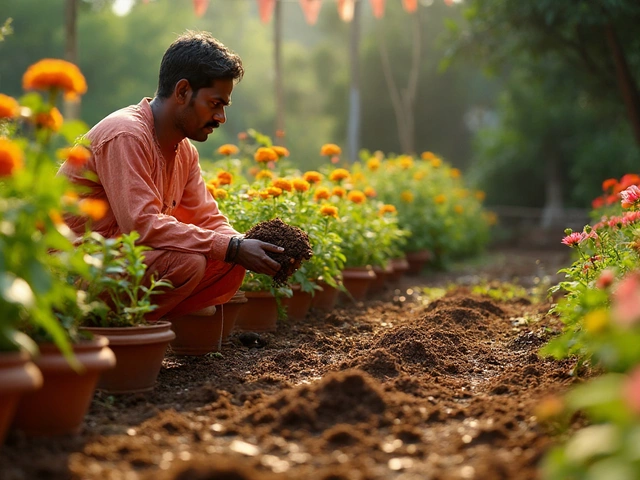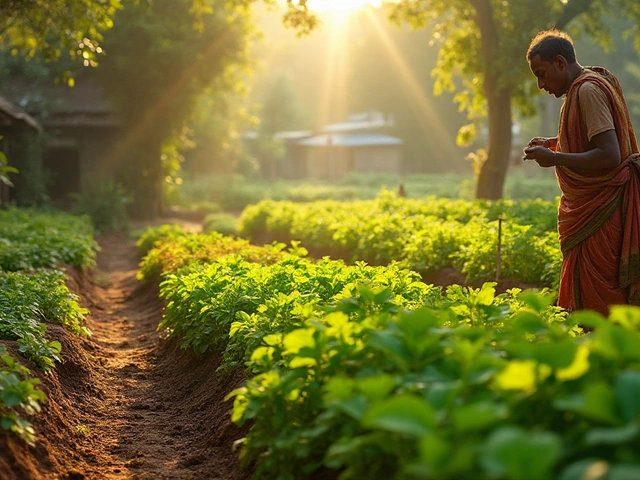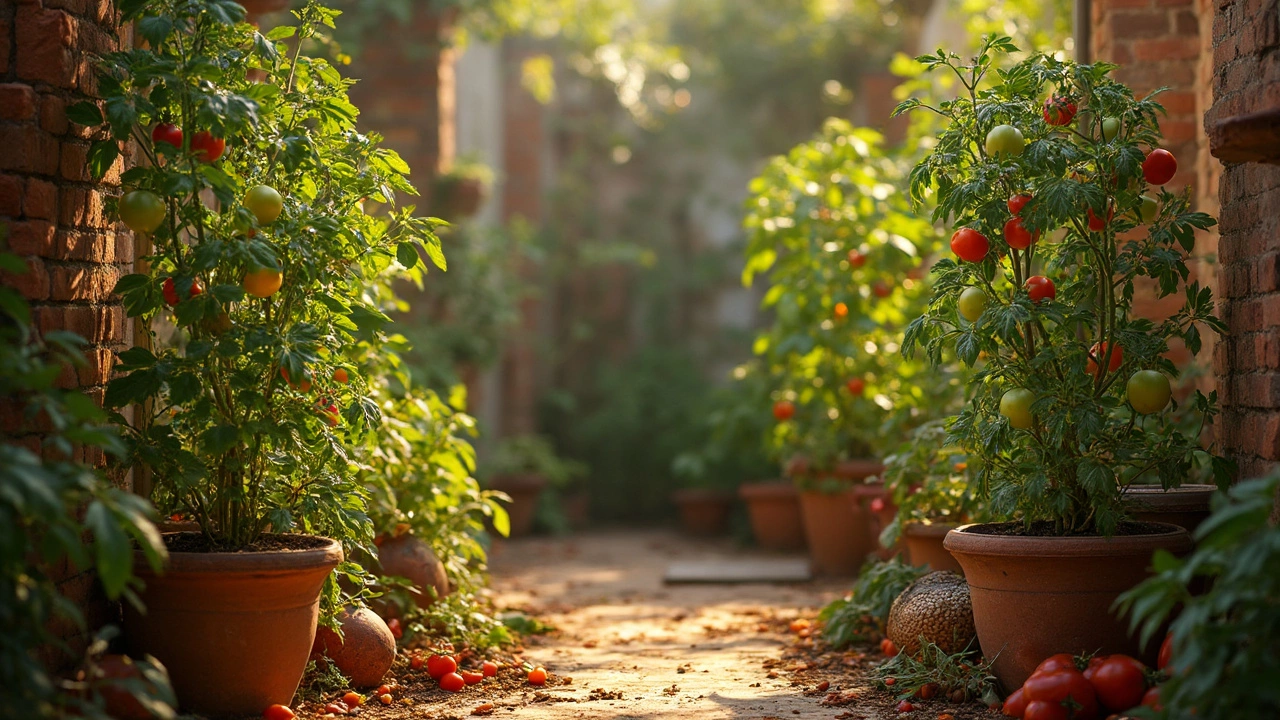Growing Tomatoes Made Easy for Indian Gardens
Thinking about planting tomatoes but not sure where to start? You’re in the right place. Tomatoes love warm weather, but they also need the right soil, water, and a bit of care to produce that sweet, ripe fruit. In this guide we’ll walk through everything you need – from picking the best varieties for India’s climate to keeping pests away without chemicals.
Pick the Right Variety and Prepare the Soil
India’s climate varies a lot, so choose a tomato type that fits your region. In hot, dry zones, go for heat‑tolerant varieties like 'Pusa Ruby' or 'Hybrid Sun Gold'. If you have a cooler, monsoon‑prone area, 'Pusa Rohini' or 'Arka Vikas' handle excess moisture better. Once you’ve picked your seeds or seedlings, work the soil to a depth of about 30 cm. Tomatoes thrive in loamy, well‑draining soil with a pH between 6.0 and 6.8. Mix in a good amount of compost or well‑rotted farmyard manure – about 2‑3 kg per square meter – to boost fertility and improve texture.
Water, Feed, and Protect Your Plants
Consistent watering is key. Use drip irrigation or a soaker hose to give a slow, steady flow at the base of the plant. This keeps the leaves dry and reduces fungal problems. Aim for about 2‑3 liters of water per plant each day during peak summer, and cut back a bit when the weather cools. Feed your tomatoes every three weeks with a balanced NPK fertilizer (10‑10‑10) or a tomato‑specific mix. When the first fruits appear, switch to a higher potassium feed (like 5‑10‑15) to encourage sweet, firm tomatoes.
Now, pests. In India, the most common culprits are the tomato leafminer, aphids, and whiteflies. Instead of spraying chemicals, try neem oil or a homemade soap spray (1 tsp mild liquid soap per litre of water). Spray early in the morning or late evening to avoid leaf burn. For fungal issues like early blight, a simple copper spray once a month can keep the disease at bay.
Pruning helps the plant focus its energy on fruit rather than too much foliage. Once the plant reaches about 1 m tall, pinch out the side shoots (called “suckers”) that grow between the main stem and leaf branches. This opens up air flow and lets sunlight reach more leaves, which improves fruit quality.
When it’s time to harvest, look for a uniform deep red color and a slight give when you gently squeeze the fruit. Pick the tomatoes as soon as they’re ripe to stop them from cracking in the hot sun. If you have more tomatoes than you can use right away, store them in a cool, shaded spot for up to a week, or make sauces and chutneys to preserve the flavor.
Bonus tip: Combine your tomato beds with companion plants like basil, marigold, or garlic. These “sister plants” naturally repel many pests and can boost the flavor of your tomatoes.
Ready to get started? Grab some quality seeds, prepare your soil, set up a simple drip system, and watch your garden fill with vibrant red harvests. Happy planting!
How Long Do Tomatoes Take to Grow? Quick Guide for Garden Lovers
Tomatoes are a popular choice for home gardeners due to their versatility and rewarding yield. From seed to harvest, tomatoes typically take 60 to 100 days to grow, depending on the variety. Proper care, including the right amount of sunlight and water, significantly impacts their growth. Understanding how different types of tomatoes mature can help gardeners plan their planting schedule. Here’s how you can optimize conditions for a successful tomato crop.
About
Kitchen Gardening
Latest Posts


Flower Blooming Seasons in India: Best Months for a Colorful Garden
By Alden Thorne Jul 13, 2025

How to Break Up a Large Garden: Best Tools for the Job
By Alden Thorne Feb 11, 2025

Discovering Asia's Largest Flower Market in India
By Alden Thorne Feb 25, 2025

